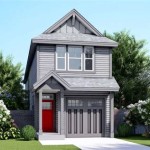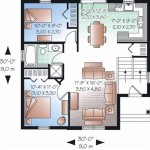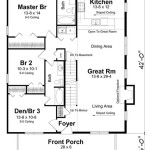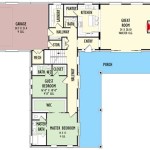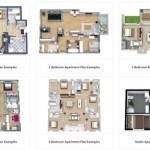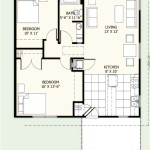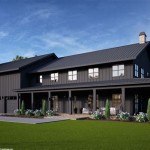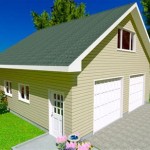2 Story Detached Garage Plans: Expanding Space and Functionality
Detached garages offer a versatile solution for homeowners seeking additional storage, workspace, or even living areas beyond the confines of their main residence. Opting for a two-story design significantly amplifies the potential of this detached structure, allowing for a greater range of uses and increased property value. This article will explore the key considerations, benefits, and planning aspects associated with two-story detached garage plans.
Maximizing Space and Utility
The primary advantage of a two-story detached garage lies in its ability to optimize space utilization. While a single-story garage provides ground-level storage or parking, a second story effectively doubles the available square footage. This additional space can be adapted for a variety of purposes. For example, the ground floor can serve its traditional function as a garage for vehicles, tools, and equipment. The upper level can then be transformed into a workshop, home office, guest suite, recreation room, or simply used for additional storage. This vertical expansion caters to diverse needs without increasing the building's footprint on the property.
Furthermore, the modular nature of garage design allows for customization. Homeowners can tailor the layout and features of both levels to suit their specific requirements. For instance, the ground floor could be designed with higher ceilings to accommodate car lifts or taller vehicles, while the upper level could incorporate insulation, heating, and cooling systems to create a comfortable and habitable environment. The possibilities are limited only by budget and local zoning regulations.
Consider the scenario of a homeowner who enjoys woodworking as a hobby. The ground floor could house tools, raw materials, and woodworking machinery, while the upper level could be configured as a dedicated workshop space, complete with ample lighting, ventilation, and dust collection systems. This separation of functions allows for a more organized and efficient workspace, free from the clutter and distractions of the main house.
Another potential application is the creation of a guest suite or in-law apartment above the garage. This provides a private and comfortable living space for visiting family members or long-term guests, complete with a bedroom, bathroom, and kitchenette. This design adds significant value to the property and offers a flexible living arrangement option. It is critical to ensure that the design meets all relevant building codes and accessibility requirements if this option is chosen.
Planning and Design Considerations
Before embarking on a two-story detached garage project, careful planning and design are essential. Several factors must be taken into account to ensure a successful outcome, including site conditions, local zoning regulations, structural integrity, and aesthetic compatibility with the existing residence.
The first step is to assess the site's suitability for a two-story structure. This involves evaluating the soil conditions, drainage patterns, and any potential obstacles such as underground utilities or trees. A geotechnical survey may be necessary to determine the soil's bearing capacity and ensure that the foundation can support the weight of the two-story garage. Proper drainage is crucial to prevent water damage and foundation problems. The site should be graded to direct rainwater away from the structure.
Local zoning regulations play a significant role in determining the permissible size, height, and location of the detached garage. These regulations typically address issues such as setbacks from property lines, maximum building height, lot coverage, and allowable uses. It is imperative to consult with the local planning department to obtain the necessary permits and ensure compliance with all applicable zoning ordinances. Failure to comply with zoning regulations can result in costly fines or even the removal of the structure.
Structural integrity is paramount in the design of a two-story garage. The structure must be able to withstand wind loads, snow loads, and seismic activity. A qualified structural engineer should be engaged to design the foundation, framing, and roof system to ensure the building's stability and safety. The engineer will consider factors such as the size and weight of the garage, the local climate conditions, and the type of materials used.
Aesthetic considerations are also important. The design of the detached garage should complement the architectural style of the main residence. This includes matching the roof pitch, siding materials, and color scheme. The garage should appear as an integral part of the property, rather than an afterthought. Attention should be paid to the placement of windows and doors to maximize natural light and ventilation while maintaining privacy.
Furthermore, the access to the second story needs to be carefully considered. Internal stairs are the most common option, but they consume valuable floor space. External stairs offer a space-saving alternative but may be less convenient during inclement weather. Elevators or lifts can be incorporated for accessibility, especially if the upper level is intended for use by individuals with mobility limitations. The specific choice will depend on the intended use of the second story and the available space.
Cost and Construction Considerations
The cost of constructing a two-story detached garage can vary significantly depending on several factors, including the size of the garage, the materials used, the complexity of the design, and the local labor rates. It is essential to develop a detailed budget and obtain multiple bids from qualified contractors to ensure that the project remains within financial reach.
The foundation is a significant cost component. A concrete slab foundation is the most common option, but other options, such as pier and beam foundations, may be more suitable for certain soil conditions. The foundation must be properly reinforced to support the weight of the two-story structure. The type of foundation, depth, and materials will heavily impact the overall cost.
Framing costs depend on the type of materials used and the complexity of the design. Wood framing is the most common and cost-effective option, but steel framing may be preferred for larger or more complex structures. The framing must be properly engineered to withstand wind and snow loads. The price and availability of lumber will influence the cost of framing.
Exterior finishes, such as siding and roofing, also contribute significantly to the overall cost. Siding options include wood, vinyl, fiber cement, and brick. Roofing options include asphalt shingles, metal roofing, and tile roofing. The choice of materials will depend on aesthetic preferences, budget constraints, and the local climate. Higher-end materials will increase the overall project price significantly.
Interior finishes, such as drywall, flooring, and paint, can also add to the cost. The level of finish will depend on the intended use of the space. A workshop may require a more durable and utilitarian finish than a guest suite. The level of insulation, electrical wiring, plumbing, and HVAC systems will also impact the overall cost.
Labor costs can vary depending on the location and the availability of skilled tradespeople. It is crucial to obtain multiple bids from licensed and insured contractors to ensure that the project is completed to code and within budget. The contractor should provide a detailed breakdown of the costs and a timeline for completion. A clear contract that outlines the scope of work, payment schedule, and warranty provisions is essential.
Permitting fees and inspections are also necessary expenses. The local building department will charge fees for permits and inspections to ensure that the project complies with all applicable building codes. These fees can vary depending on the size and complexity of the project.
Finally, contingency funds should be set aside to cover unexpected costs or delays. Construction projects are often subject to unforeseen circumstances, such as weather delays, material price increases, or unexpected site conditions. A contingency fund of 5-10% of the total project cost is recommended.
Constructing a two-story detached garage is a substantial undertaking that requires careful planning, design, and execution. By considering the factors outlined in this article, homeowners can maximize the potential of their property and create a versatile and functional space that meets their specific needs.

Garage Plan 4084 2 Car House Floor Frank Betz Associates

Garage Plan G1628a

Garage Plans Apartment Outbuildings Thegarageplan Com

Barndominium 2 Car Garage Apartment 575 Sq Ft 33 X 34 House Plans Modern Farmhouse Architectural Floor Tiny

Garage Loft Plans Detached 2 Car Plan Design 050g 0044 At Thegarageplan Com

Two Car Garage Plans

Garage Plan Mustang 6986 Drummond House Plans

2 Car Story Garage Plan Package 24 X 30 Complete Building Blueprints With Loft Material List

Plan 62344dj Detached Garage With 2 Story Garden Room In Back

2 Car Garage Plans Floor Apartment Lofts

